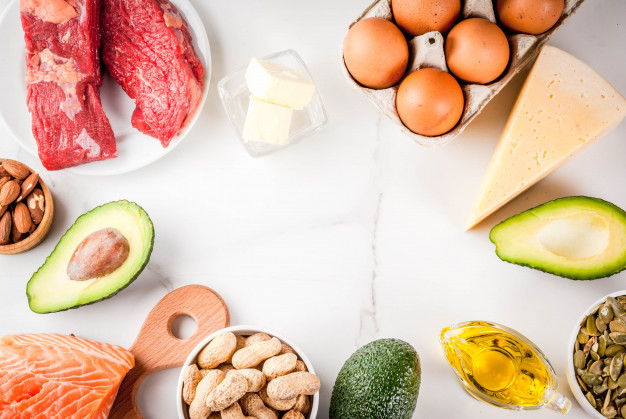The paleo diet, also called the stone age diet, which has become popular in recent years, is designed to be similar to what hunter-gatherer people ate thousands of years ago.
Although it is impossible to know exactly what people ate in different parts of the world during the Stone Age, researchers believe that their diet consisted of whole foods.
By following a whole food-based diet and leading physically active lives, hunter-gatherers are estimated to have had much lower rates of lifestyle diseases such as obesity, diabetes and heart disease.
In fact, several studies suggest that this diet can lead to significant weight loss and significant improvements in health.

Foods that can be consumed in the Stone Age Diet
Meat: Beef, lamb, chicken, turkey, and others.
Fish and Seafood: Salmon, trout, haddock, shrimp, shellfish, etc. Choose caught, not farmed, if possible.
Eggs: Choose free-range, pasteurised or omega-3 enriched eggs.
Vegetables: Broccoli, cabbage, peppers, onions, carrots, tomatoes, etc.
Fruits: Apples, bananas, oranges, pears, avocados, strawberries, blueberries and more.
Tubers: Potatoes, sweet potatoes, turnips, etc.
Nuts and Kernels: Almonds, macadamia nuts, walnuts, hazelnuts, sunflower seeds, pumpkin seeds and more.
Healthy Fats: Extra virgin olive oil, coconut oil, avocado oil and others.
Salt and Spices: Sea salt, garlic, turmeric, rosemary, etc.

Foods that cannot be consumed in the Stone Age Diet
Cereals: Breads, pastas, wheat, rye, barley, etc.
Legumes: Beans, lentils and more.
Milk and Dairy Products: Avoid many dairy products, especially low-fat (some versions of paleo include whole milk, such as butter and cheese).
Certain Vegetable Oils: Soybean oil, sunflower oil, cottonseed oil, corn oil, grapeseed oil, safflower oil, and others.
Trans Fats: Found in margarines and various processed foods. Often referred to as “hydrogenated” or “partially hydrogenated” oils.
Sugar and Artificial Sweeteners: Sugar is definitely not included in this diet. All options of sweeteners such as aspartame, sucralose, cyclamates, saccharin, acesulfame potassium should also be avoided. Use natural sweeteners instead.
Highly Processed Foods: This includes anything labelled “diet” or “low-fat” or containing many additives.

How to Follow the Stone Age Diet?
In the simplest definition, this diet is based on eating until you are full when you are hungry. However, you only eat foods consumed in the Stone Age.
Apart from that, it generally proceeds with high protein, low carbohydrate, moderate fat intake. This is because meat and fish are consumed a lot, carbohydrate sources are very low and fat intake is kept at a moderate level with meat and nuts. To list the macronutrients,
40% protein
20-30% carbohydrates
30-40% fat.
A successful stone age diet nutrition plan can be created by following this order.

Benefits of the Stone Age Diet
Increased Insulin Sensitivity: If we constantly take high amounts of carbohydrates into our body, our insulin sensitivity will decrease after a while and our body will start to store more fat. Since carbohydrate intake is low in the Paleo Diet, insulin levels decrease and fat burning increases.
It can Strengthen our Immune System: Poor quality and processed foods are not good for our body, even if we do not realise it. In the Paleo Diet, we do not consume processed, packaged foods, fast-foods. In this way, the foods we consume will be complete and high quality foods. Such as green vegetables, fruits and meats. In this way, we can strengthen our immune system and reduce our risk of getting sick.
It is Anti-Diabetic: Since we take less carbohydrates, our blood sugar is stable. Therefore, it can be used to keep diabetes under control or to treat type-2 diabetes.
Heart Friendly: Both in cases of diabetes and in general, the Paleo Diet has been supported by research that it lowers blood pressure and keeps cholesterol under control. However, these studies have been conducted against these studies and we cannot say that a definitive decision has been reached.

Harms of the Stone Age Diet
There may be Vitamin Mineral Deficiency: You will also be missing the vitamins and minerals contained in foods that should be avoided to consume. Therefore, we need to pay attention to the fact that we get enough macronutrients in restrictive nutrition systems such as the paleo diet.
It Can Become an Expensive Diet: Individuals who follow the Paleo diet by trying to completely fit the Paleolithic Age may need to get their protein entirely from meat and nuts, as they do not consume cheap protein sources such as legumes. This will cause the diet to become expensive.
Fibre Intake May Remain Low: We should not think of the Paleo Diet as a diet that only eats meat. In addition to meat and fish consumption in the Paleo diet, we should take care to consume enough vegetables. Otherwise, problems may occur in the digestive and excretory system as fibre intake will be low.
